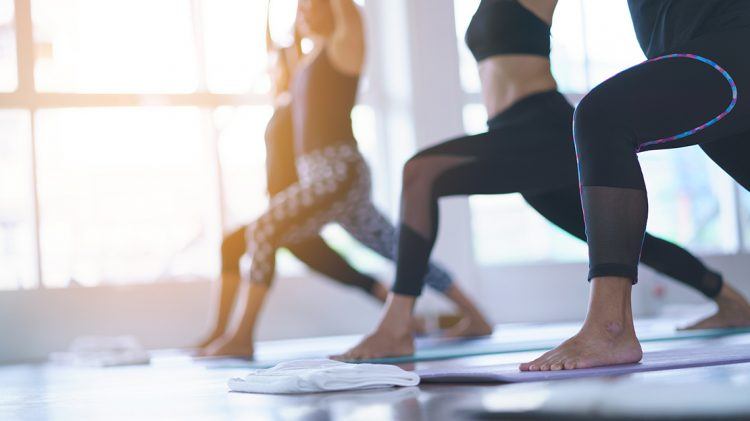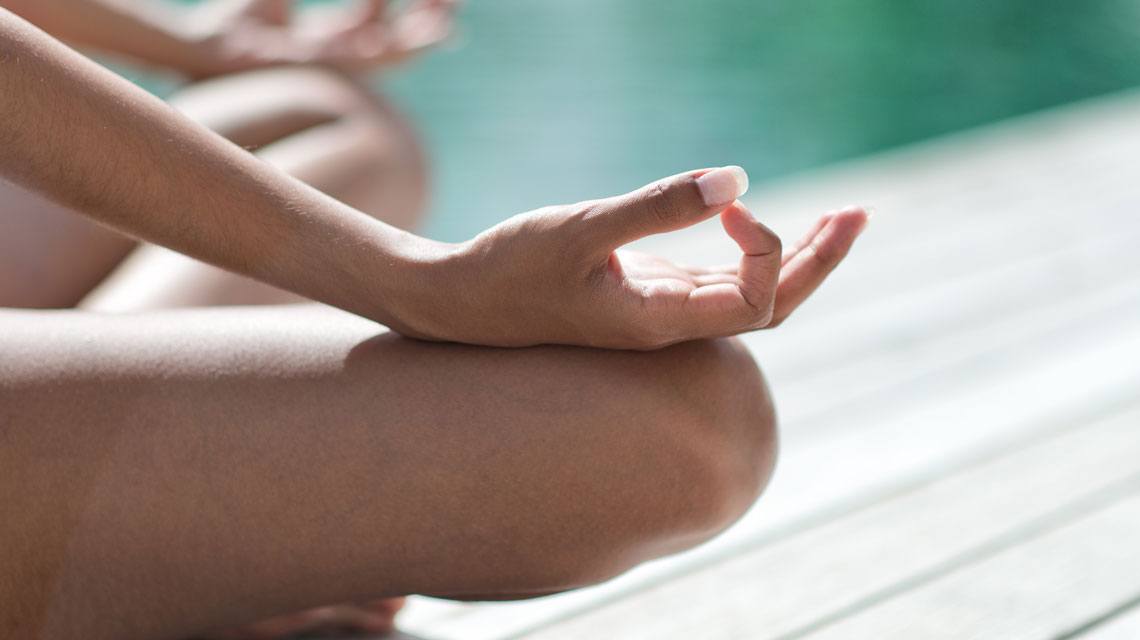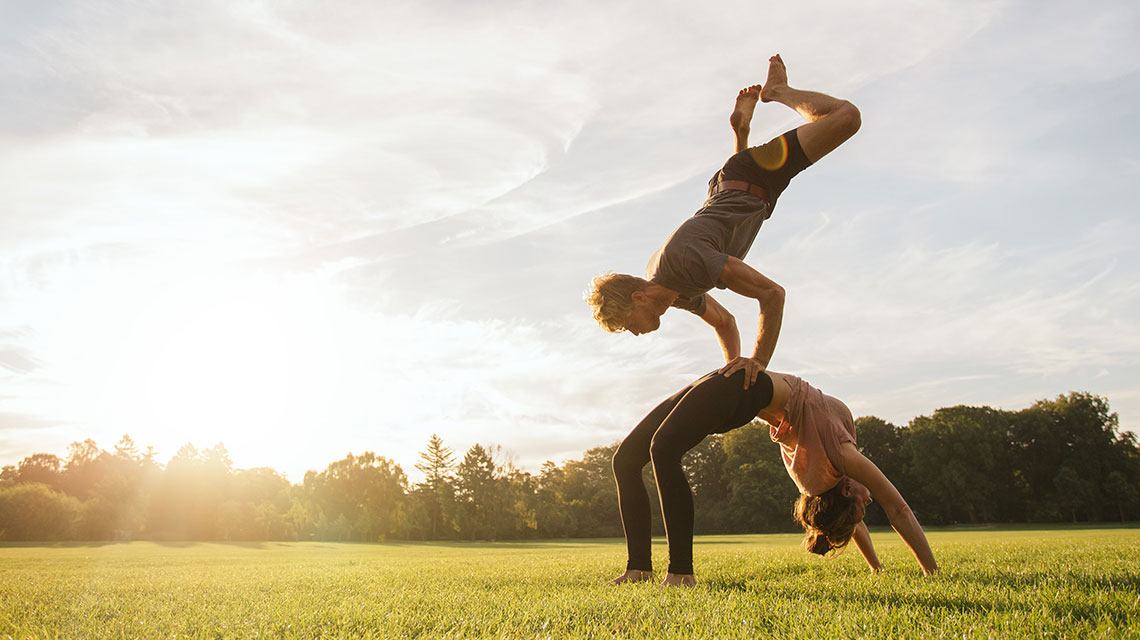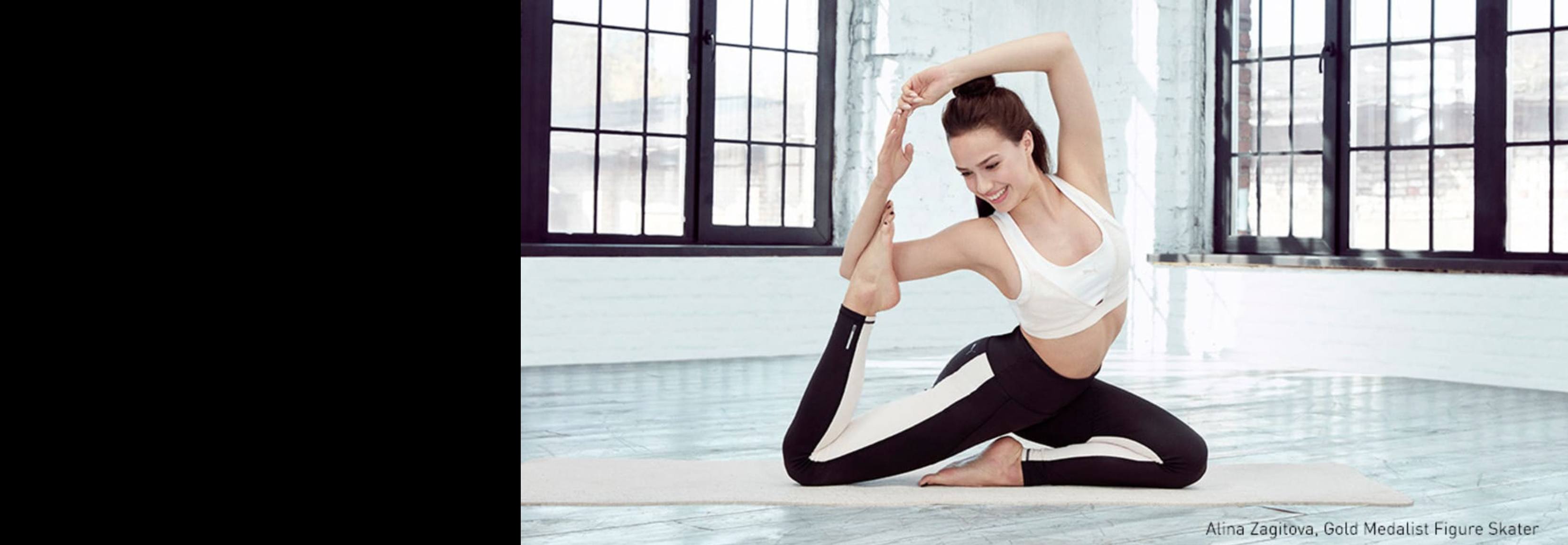
Yoga No-No’s
Common mistakes & how to fix them
June 18, 2020Common mistakes & how to fix them
June 18, 2020With all that bending, deep breathing and stretching, some mistakes are bound to happen on the yoga mat. Ahead of International Yoga Day on Sunday, we have collected some of the most common blunders that you should avoid, no matter whether you’re a beginner or experienced yogi.
Refusing Props
Some people make the mistake of assuming that grabbing for a block or strap is a sign of weakness, indicating that you are somehow not as ‘good’ or ‘strong’ as the others in the class. But this is totally false! Props are a great way to enhance and support your practise, allowing you to move deeper in certain poses in a safe manner. At the beginning of class have a look at the props stacked on the teacher’s mat so you can get an idea of what you may need during your session. Grab your gear and then don’t be shy—use them!
Forcing—anything!
There is no such thing as ‘no pain no gain’ in yoga. This is a practise of mindfulness and deepening your connection to your body. Slowly and steadily you can (and should) find your edge in each asana—that sweet spot where the body is stretching but not giving sharp pain signals—and then breathe and try to relax in this place. Never force your body into a position it doesn’t want to be in.
Practising on a full stomach
Before hitting the mat, it is best to avoid eating a big meal. Having food in your digestive system can disrupt your practice and put unnecessary pressure on your digestive tract during the more twisty asanas. It is also counterproductive for those seeking to lose weight: moving into a flow with an empty stomach allows our body to tap into its energy reserves more quickly and efficiently.
Holding your breath
Being aware of your breath and synchronizing it to your movements is what makes yoga good yoga. A smooth and steady breath helps us to move in and out of poses, centre our awareness and cleanse the body. The importance of breath cannot be stressed enough—without it we would cease to exist.
Many of us tend to hold our breath as we begin to flow or else, we try to force our breathing to match the teacher’s, especially in the more difficult positions. When you catch yourself doing this take a moment to re-focus on your own deep, conscious breathing rhythm. This will help you stay connected to your own body and provide it the oxygen it needs!
Comparing yourself with others or worrying what others think
Before walking into class, check your ego at the door. Yoga is not competitive and comparing yourself to the yogi beside you does way more harm than good. Worrying what others think or comparing yourself to others in the room distracts you from the true goal of yoga. Remember: this is your practise and your journey.
Seeking Perfection
There is no such thing as perfection in yoga. It is called a practise for a reason—every single day your body may look or feel different. This means that if you attach yourself to a specific outcome during class it will wreak havoc on your inner peace. Instead focus on proper alignment, feeling steady and strong and anchored in the present moment, and allow yourself to toss out all expectations of how yoga ‘should be’.
Locking your joints
When you lock your knees or elbows during an asana, the muscles surrounding the area are passive and all the strain from the pose is being placed on a network of delicate ligaments and cartilage. If you fall into this bad habit early in your yogic career, you are setting yourself up for a lot of premature wear and tear on your body, which will cause a great deal harm in the long term.
Avoid this by keeping a slight bend in the knees and elbows and activating the surrounding muscles. When practised properly, yoga is actually a great way to keep your joints lubricated and smooth— just make sure not to overextend yourself!
Letting Your Eyes Wander
You may have heard your teacher saying the word drishti and been slightly confused. Drishti is a Sanskrit word meaning sight. It is a technique to establish a focused gaze during your practise, supporting self-awareness and ridding the mind of unnecessary visual distractions. Practise keeping the eyes focused on a certain point and you may be amazed by how much your concentration, balance and power can improve.
Skipping Shavasana
Arguably the best part of class, though some may feel tempted to skip this ‘slow bit’ at the end. But that is a big mistake—shavasana is the final relaxation pose that allows your mind to slip away and your body to integrate and absorb all the new information it has received throughout the class. Remember: shavasana is a pose just like any other. If you are truly having difficulties settling in and relaxing, then this is probably the most important pose to explore more deeply.
To wrap it up: yes, yoga is a sacred practise, but it doesn’t need to be super serious. Stay mindful and don’t judge yourself if you are guilty of making some of the common mistakes mentioned above. Slowly work to become more aware and in tune with yourself and your body. Good luck and namaste!




